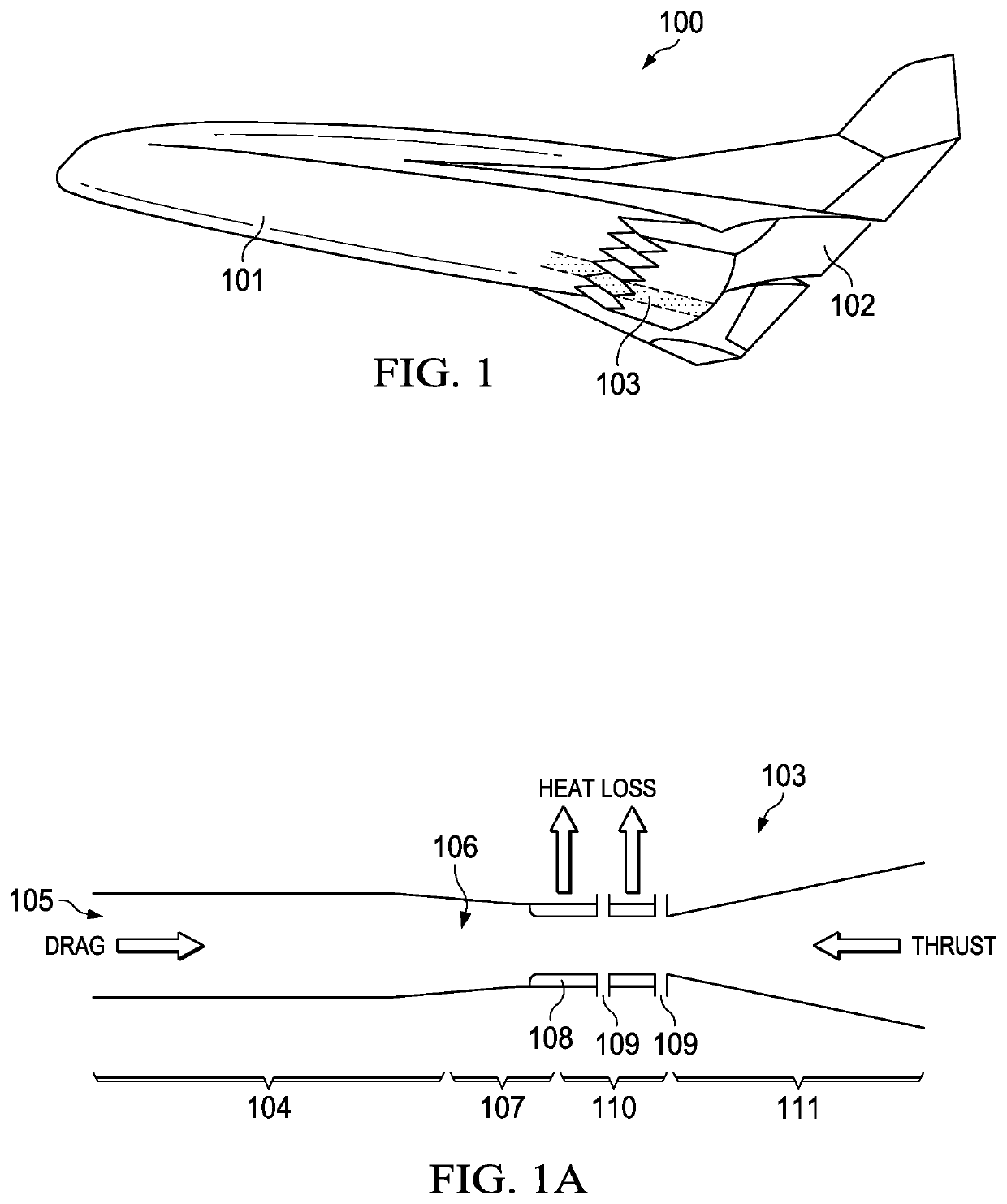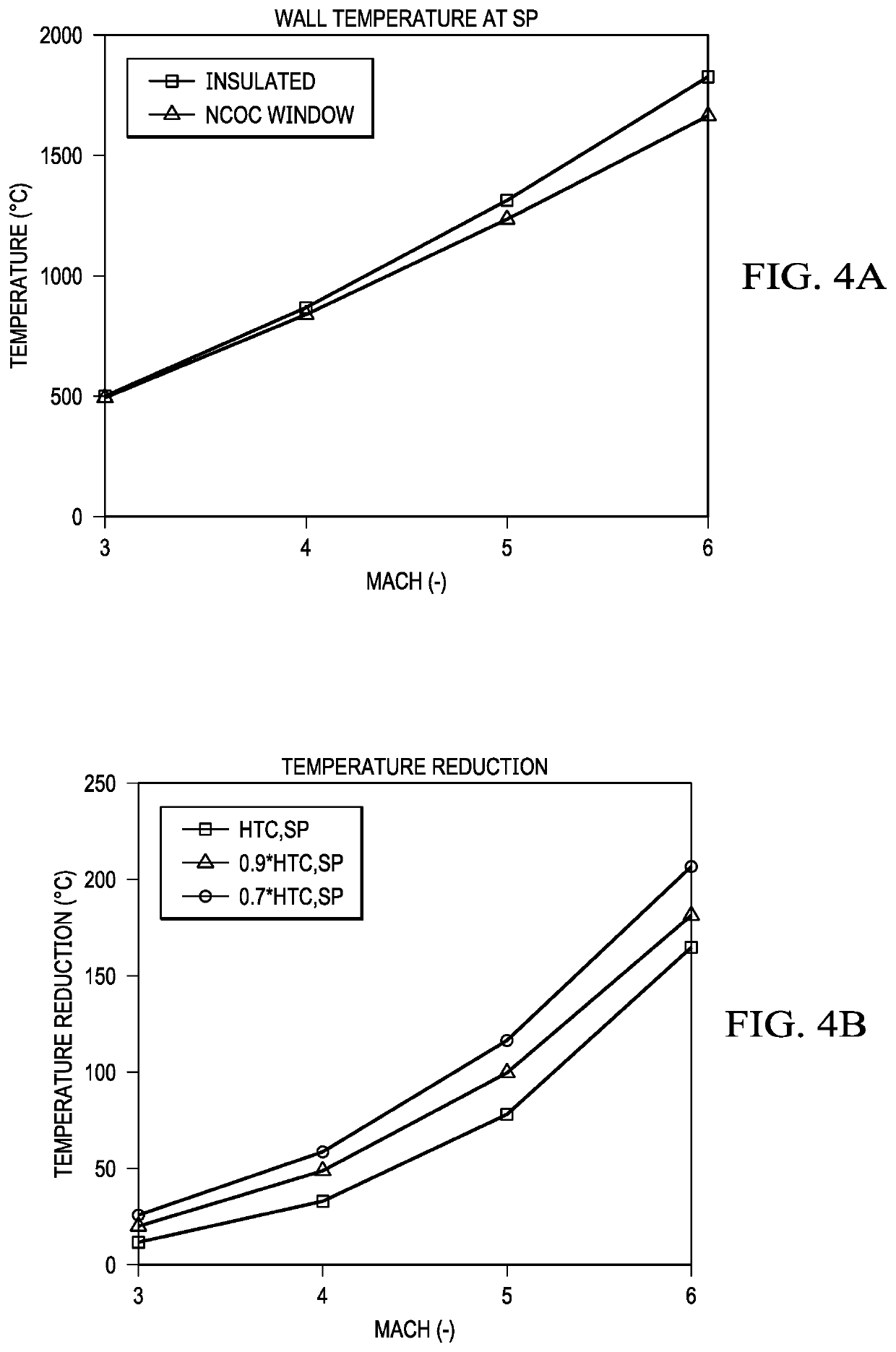Use of infrared transparent airframe materials for passive cooling of internal components
a technology of infrared and transparent airframes, applied in the directions of machines/engines, mechanical equipment, transportation and packaging, etc., can solve the problems of restricting flight capabilities based on material limitations, and achieve the effects of reducing mass, reducing speed persistence, and increasing peak mach capability
- Summary
- Abstract
- Description
- Claims
- Application Information
AI Technical Summary
Benefits of technology
Problems solved by technology
Method used
Image
Examples
Embodiment Construction
[0013]It should be understood at the outset that, although exemplary embodiments are illustrated in the figures and described below, the principles of the present disclosure may be implemented using any number of techniques, whether currently known or not. The present disclosure should in no way be limited to the exemplary implementations and techniques illustrated in the drawings and described below. Additionally, unless otherwise specifically noted, articles depicted in the drawings are not necessarily drawn to scale.
[0014]Aircraft flight capability is restricted by material limitations and, for hypersonic vehicles, is at least partially driven by temperature. Flight speeds are limited to reduce aerodynamic heating of the engine flow path, but this reduces performance of the system. Reducing temperatures on hardware increases capability. Engine components are cooled using liquid fuel that passes through cooling channels, providing benefits from preheating the fuel before combustio...
PUM
 Login to View More
Login to View More Abstract
Description
Claims
Application Information
 Login to View More
Login to View More - R&D
- Intellectual Property
- Life Sciences
- Materials
- Tech Scout
- Unparalleled Data Quality
- Higher Quality Content
- 60% Fewer Hallucinations
Browse by: Latest US Patents, China's latest patents, Technical Efficacy Thesaurus, Application Domain, Technology Topic, Popular Technical Reports.
© 2025 PatSnap. All rights reserved.Legal|Privacy policy|Modern Slavery Act Transparency Statement|Sitemap|About US| Contact US: help@patsnap.com



